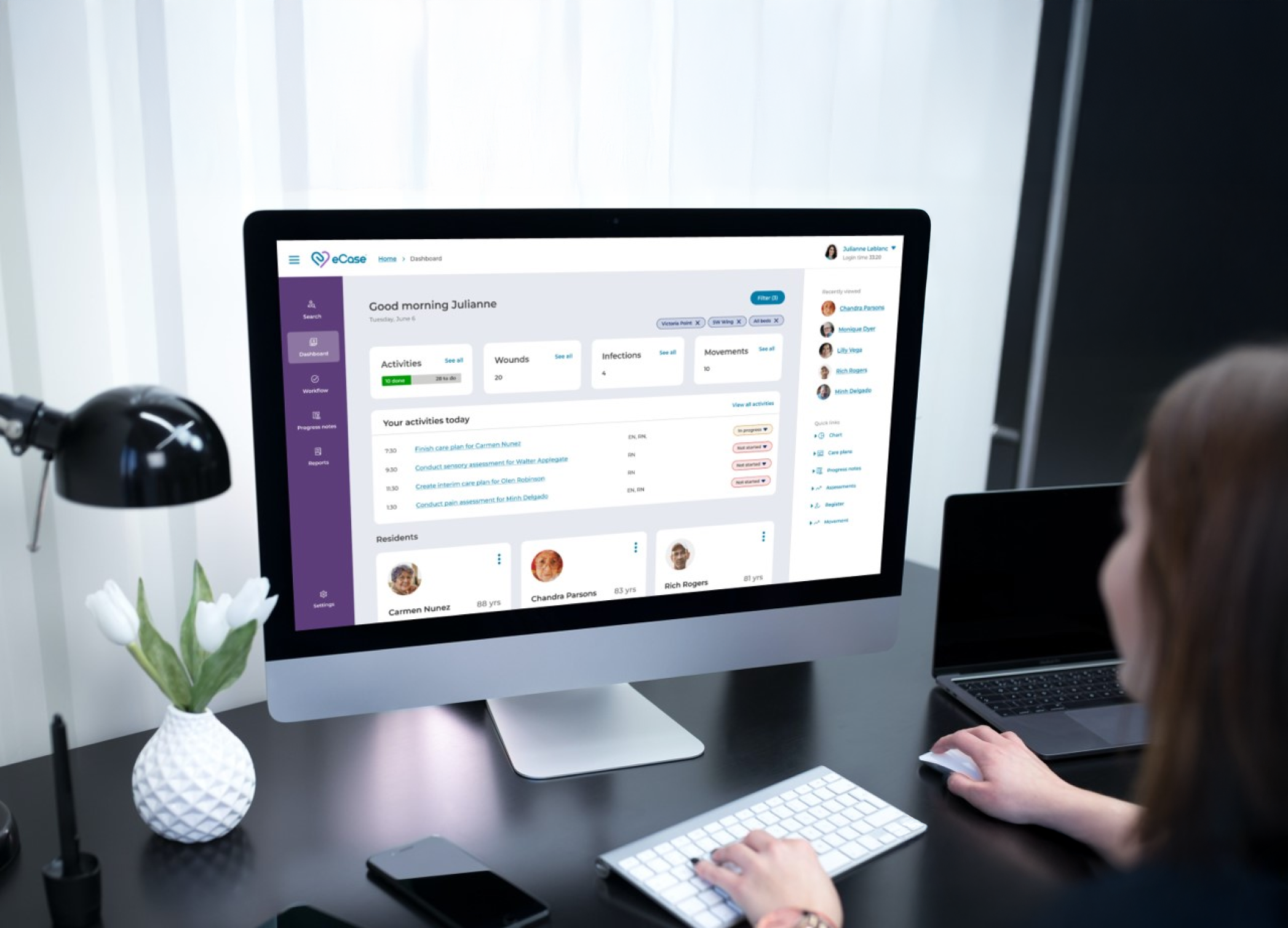Real-time data helps aged care teams make faster, more informed decisions. It strengthens compliance, reduces risk, and creates a seamless experience for older Australians seeking care, as well as their families. But to truly unlock its power, aged care software must be integrated, connected, and designed for the future.
Here are five practical ways aged care providers can use real-time data to improve outcomes, with tools already embedded into the eCase ecosystem.
- Smarter Pain Management
Pain in the aged care industry isn’t always straightforward. Older Australians often struggle to express their pain, especially if they have dementia or struggle with other communication challenges.
No one deserves to be left in pain, for any amount of time. That’s where PainChek comes in. Integrated with eCase, PainChek uses AI and facial recognition to assess pain levels in real time, even when a client can’t self-report.
Once detected, the data is automatically pushed into the eCase platform, enabling staff to respond quickly, adjust care plans, and avoid escalation
- Streamlined Medication Management
Anyone who’s had a loved one in aged care understands the frustration around accurate and efficient medication management. It’s a well-known pain point and comes with significant clinical risk.
With the BestMed integration, medication administration data flows seamlessly between the pharmacy and eCase, giving staff up-to-date access to current scripts, MAR charts, and dispensing schedules. This reduces the risk of medication errors and supports safer, more efficient workflows, without the need for double entry or cross-checking across platforms.
For care recipients, that means greater consistency and safety in medication management, while families can feel reassured knowing their loved ones are receiving the correct medications at the right time.
- Feedback That Drives Change
No one likes to be kept in the dark, especially when it comes to those they love, or their own lives. Transparency is key. It leads to better care outcomes and uncovers opportunities for improvement.
eCase gives those in care and their families an easy, digital way to provide real-time feedback. Feedback is automatically routed to the right team members, tagged by urgency or issue type, and tracked over time. This allows providers to respond proactively, not just to complaints, but to suggestions, compliments, and service insights that might otherwise be missed.
Over time, this continuous supply of feedback can uncover trends, recurring pain points, and opportunities for innovation, empowering leadership teams to make informed decisions that improve operations and strengthen the overall care experience.
- Business Intelligence
For aged care leaders, real-time operational data is just as important as clinical visibility. Decision-making needs to be based on the situation as it stands now.
Through its integration with Yellowfin, eCase can provide advanced dashboards and reporting tools that surface insights across the business, from staffing patterns to occupancy rates to incident trends.
Providers can drill down into the data, forecast demand, and make evidence-based decisions that support long-term sustainability.
- Shared Advance Planning
Advance care plans are a critical part of ensuring those needing care have their wishes respected. Often though, these plans are left buried in paperwork or stored separately, making them less relevant in a tangible way.
Touchstone Lifecare solves this by making advanced care planning a dynamic, digital, and collaborative process. When integrated with eCase, staff can access up-to-date preferences instantly, reducing ambiguity and supporting person-centred care. This is especially important during times of stress or medical escalation.
These are just a few examples of what’s possible when aged care platforms are open, integrated, and built around real-time data. From pain management to planning, compliance to communication, every step becomes clearer when everyone is working from the same source of truth.
eCase is leading the way in helping aged care providers future-proof their operations with technology that empowers, rather than overwhelms








